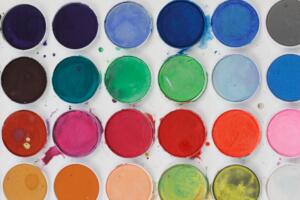
Recreating water on a canvas is not an easy task for any artist. It requires an artistic eye and special skills that can take a lot of practice.
It is also dependent on the type of water you are drawing, because painting a river requires something unique as opposed to painting a lake.
Studying reference images regarding different bodies of water is crucial, if realism is your goal. Every artist has a different technique but keep reading for some tips on how to paint water scenes.
Different Bodies of Water
 Different brush stroke techniques will depend on the body of water itself. It mostly depends on whether the water is moving or stationary. Here are some tips for painting water that is shallow.
Different brush stroke techniques will depend on the body of water itself. It mostly depends on whether the water is moving or stationary. Here are some tips for painting water that is shallow.
• Use energetic brushwork with strokes going from side to side with a thin brush.
• Make sure you drag the paint from the darker reflected objects at a fast pace into the lighter areas. Wash your brush and then drag the light areas back to the dark.
• Keep an eye out for bright highlights from the ripples in the darker areas and smaller dark streaks may appear lighter in areas.
Deep water will require a different type of brushstroke and skill type. This is a much smoother image and surface to work with.
• Use broader brushwork and use a large flat brush.
• Apply slow strokes that will form softer, more elegant edges.
Under the Water
 If you are painting underwater scenes, the colors you will use differ depending on the depth.
If you are painting underwater scenes, the colors you will use differ depending on the depth.
• Shallow water tends to have a warmer tone and is impacted by the rocks, algae, and sand that lies beneath it.
• Rivers, streams, and lakes tend to be greener in color. This is because of the sediment that is in the water and how it reflects more light.
• As the water gets deeper, the greener your color pallet should be.
• Light will appear darker when reflected on the surface of the water. The sky that is reflected on the water’s surface is a deeper version of what is actually in the sky. The reflections will be much darker and dimmer than looking at the objects directly.
• Dark colors are lighter when reflected on the water. On the water’s surface, shadow areas from certain objects next to the water tend to be a window to the surface underneath.
These are just a few tips to keep in mind when you are trying to paint water. If you are already an artist you may already know what is required. For beginners, this may serve as a basic guideline for future projects.
The important thing to keep in mind is that lighting is everything, your resulting image will depend on how much or how little light there is reflecting on the water that will strongly impact your painting.
However, part of art is rejecting conventional norms, so if you want to paint a bright orange lake surrounded by purple trees, go for it! Art is also about having fun, and lake life reflects that concept perfectly.

